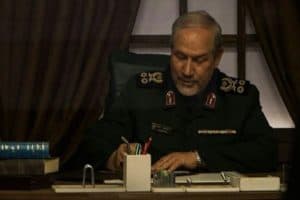…..even if they are corrupt and the money used has been laundered or financed by a terror organization…
Primer:
CIA Director: We ‘have to assume’ terrorist activity in US
‘Impossible to say’ if ISIS has cells here
(CNN) – The director of the CIA said Wednesday despite the government’s best efforts, the likelihood of terrorist activity in the United States is strong.
“So I think we have to assume there’s something here in the states,” said John Brennan, in an interview for CNN’s “Erin Burnett OutFront” that aired Wednesday night. “We have to be relentless in terms of going after them.”
Brennan, who was appointed to lead the CIA shortly before President Barack Obama’s second term, said “it’s impossible to say” whether ISIS has operatives or cells in the United States, and he credited the “tremendous advances in information sharing and interaction between federal officials” in making it difficult for terrorists to operate in the country.
He said he is confident that the US will be “able to remove other senior members” of ISIS, including the organization’s leader Abu Bakr al-Baghdadi.
“His time is limited,” Brennan said of al-Baghdadi. “It’s just a question of whether or not he is going to be removed this week, this month, next month or in the coming months.”
But still, Brennan said “you cannot assume there’s nobody in the homeland.”
“What you need to do is to be able to continue to uncover and use intelligence, what they might be doing here,” he said. More details here.
Immigrant Investor Program:
Progress Made to Detect and Prevent Fraud, but Additional Actions Could Further Agency Efforts
What GAO Found Full report here.
Inspector General Report is here.
The Department of Homeland Security’s U.S. Citizenship and Immigration Services (USCIS) has recently taken steps intended to enhance fraud detection and mitigation activities for the Employment-Based Fifth Preference Immigrant Investor Program (EB-5 Program) and address previous GAO recommendations.
This includes actions such as conducting and planning additional risk assessments to gather additional information on potential fraud risks to the program. For example, USCIS is leveraging overseas staff to investigate potential fraud associated with unlawful sources of immigrant investor funds and is conducting a site visit pilot to help assess the potential risks of fraud among EB-5 program investments. USCIS is also taking steps to collect more information about EB-5 program investments and immigrant investors through new, revised forms and expanding its use of background checks, among other things, to help improve its ability to identify specific incidence of fraud. However, fraud mitigation in the EB-5 Program is hindered by a reliance on voluminous paper files, which limit the agency’s ability to collect and analyze program information. In its review of a nongeneralizable selection of files associated with EB-5 program regional centers and immigrant investors, GAO found that identifying fraud indicators is extremely challenging. For example, many of these files were several thousand pages long and would take significant time to review. According to USCIS documentation, the program anticipates receiving approximately 14 million pages of supporting documentation from its regional-center applicants and immigrant investor petitioners annually. Recognizing these limitations, USCIS has taken preliminary steps to study digitizing and analyzing the paper files submitted by petitioners and applicants to the program, which could help USCIS better identify fraud indicators in the program; however, these efforts are in the early stages.
USCIS has incorporated selected leading fraud risk management practices into its efforts but could take additional actions to help guide and document its efforts. GAO’s Fraud Risk Framework is a set of leading practices that can serve as a guide for program managers to use when developing efforts to combat fraud in a strategic, risk-based manner. USCIS’s actions align with two key components of the Fraud Risk Framework: (1) commit to combating fraud by creating an organizational culture and structure conducive to fraud risk management such as by providing specialized fraud awareness training; and (2) assess risks by planning and completing regular fraud risk assessments. However, USCIS has not developed a fraud risk profile, an overarching document that guides its fraud management efforts, as called for in the Fraud Risk Framework. Instead, USCIS’s risk assessments, spanning multiple years, were developed as separate documents and reports, and there is not a unifying document that consolidates and systematically prioritizes these findings. Without a fraud risk profile, USCIS may not be well positioned to identify and prioritize fraud risks in the EB-5 Program, ensure the appropriate controls are in place to mitigate fraud risks, and implement other Fraud Risk Framework components.
Why GAO Did This Study
Congress created the EB-5 visa category to promote job creation and capital investment by immigrant investors in exchange for lawful permanent residency and a path to citizenship. Participants must invest either $500,000 or $1 million in a business that is to create at least 10 jobs. Upon meeting program requirements, immigrant investors are eligible for conditional status to live and work in the United States and can apply to remove the conditional basis of lawful permanent residency after 2 years. In August 2015, GAO reported on weaknesses in certain USCIS fraud mitigation activities, and made two related recommendations.
GAO was asked to review actions taken by USCIS to address fraud risks in the EB-5 program since its August 2015 report. This report examines the extent to which USCIS (1) has taken steps to enhance its fraud detection and mitigation efforts; and (2) has incorporated selected leading fraud risk management practices into its efforts. GAO reviewed relevant program documentation and information; selected and reviewed a random, nongeneralizable sample of immigrant investor petitions and regional-center applications submitted between fiscal years 2010 and 2014; and compared USCIS’s actions against GAO’s Fraud Risk Framework.
What GAO Recommends
GAO recommends that USCIS develop a fraud risk profile that aligns with leading practices identified in GAO’s Fraud Risk Framework. The Department of Homeland Security concurred with GAO’s recommendation.



